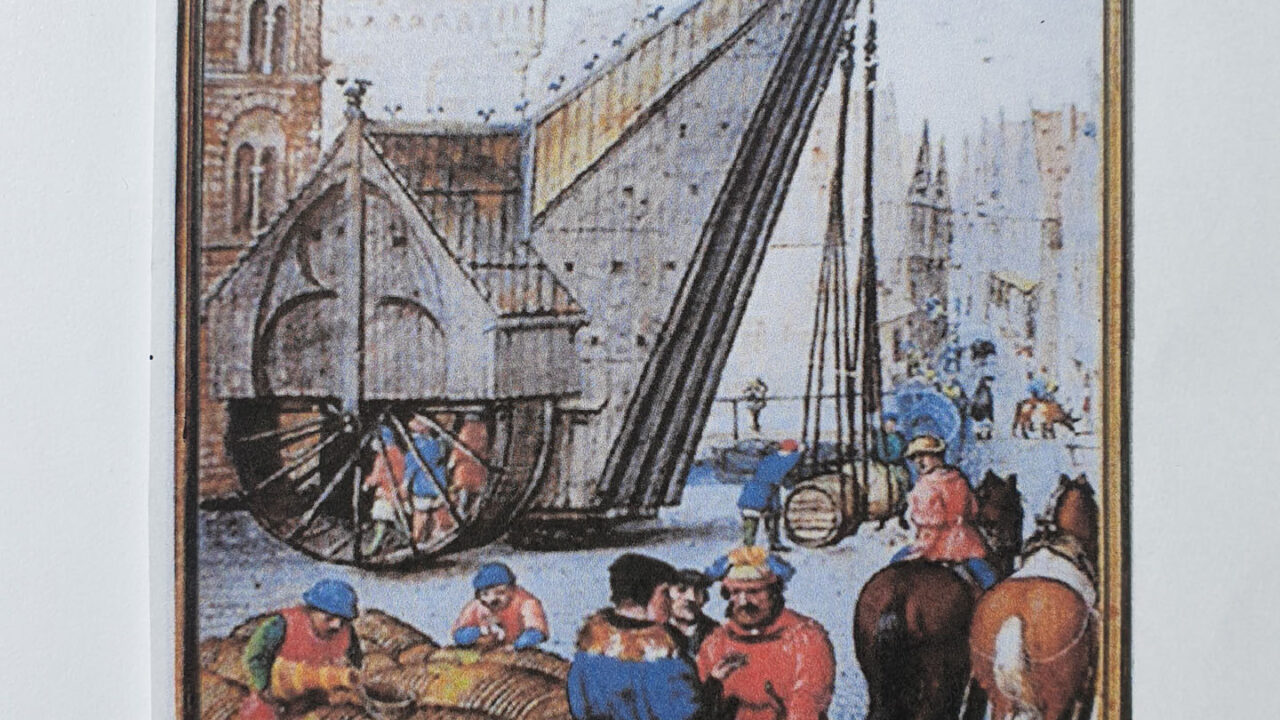Until in 1837 the crane failed while lifting four cast-iron statues. That same crane has now been recreated at full size and given a place on the Bemuurde Weerd, near the Monica Bridge.
In many medieval trading towns that bordered a river, the loading and unloading quays used to have a crane driven by human power: Tiel, Schiedam, ‘s-Hertogenbosch, Ghent and Bruges. But Utrecht also had such a city crane. Inside the crane were two large treadmills in which children walked: young boys, small in stature. People called them “the crane children. Of course now we immediately think of child labor, but it was different back then.
The crane children were well paid, they worked under the supervision of a crane master and enjoyed doing their work. The rotation of the treadmills set the hoisting rope in motion, and the onion-shaped turning head on top of the crane allowed the direction of the hoist to be changed manually. In the Middle Ages, Utrecht was still a significant port where goods were sailed into the city from the Rhine – via the Vecht and Keulsche Vaart.
The Utrecht city crane stood on the Oudegracht, right under the premises of the Winkel van Sinkel, where really all sorts of things were for sale: “Hats and caps and ladies’ corsets, licorice for candy and pills for poop. Anton Sinkel had thought that the four buttresses in the front facade should just be cast iron female figures. He had them come specially from England. But when the city crane lifted these “caryatids” off the boat, the crane collapsed on the last hoist and the statue fell into the moat. That happened on Saturday, Sept. 9, 1837. The crane was never rebuilt.
Image: the city crane used to stand on this spot under the premises of the Shop of Sinklel.








